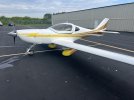What’s most interesting about this to me is that apparently you are certificated as a Private Pilot or better, so you are not limited to flying an LSA aircraft. In the lighter aircraft, there are many certificated aircraft beyond LSA’s that could accomplish what you’re looking for and are proven, fun to fly aircraft. Cessna 140’s, Luscombe, even Cubs come to mind.
I flew a friends small, Rotax powered, super small, high wing two place plane once on a two hour cross country flight and was ready to get out once I was on the ground. Many years ago I flew my ragwing 140 on a 7 hour cross country trip and was quite rested when the day was done.
Your results may vary, but for me such a plane, at least that one, was not a pleasurable experience. I wish I could remember what it was called, but it was much like a 150 that had been shrunk about 20%. It seems like the name started with an S and I think he bought it new from the Factory in Georgia. I have the information in an old logbook if I can remember to look for it.


